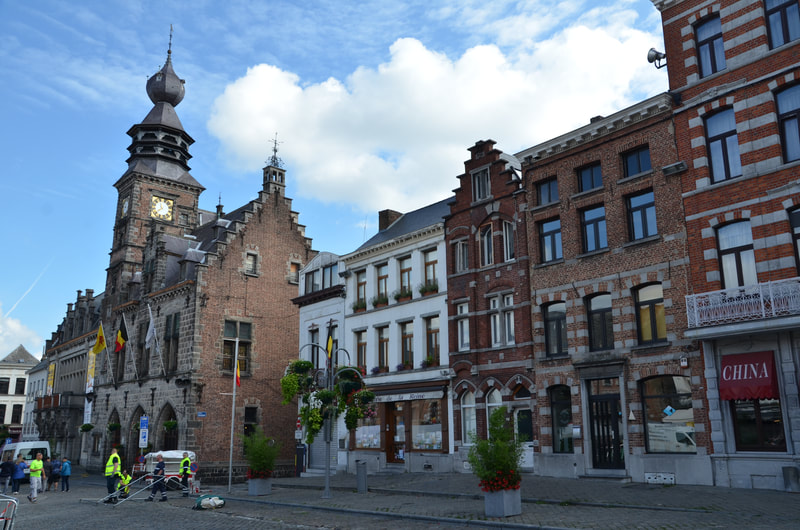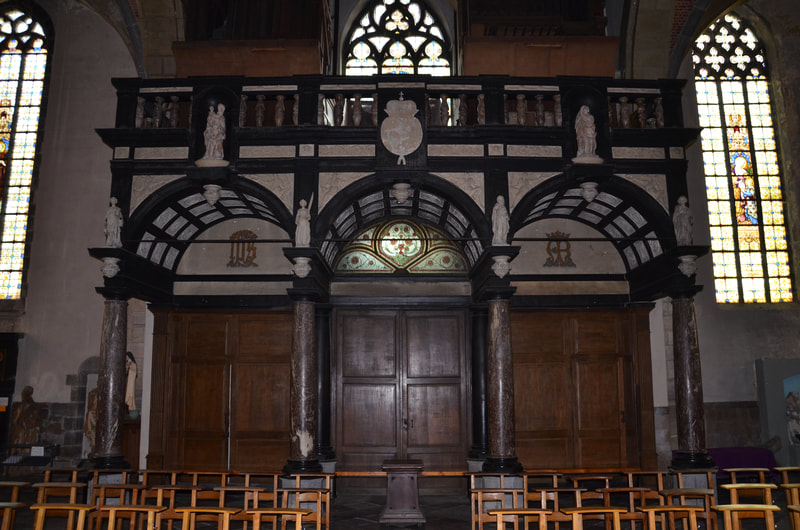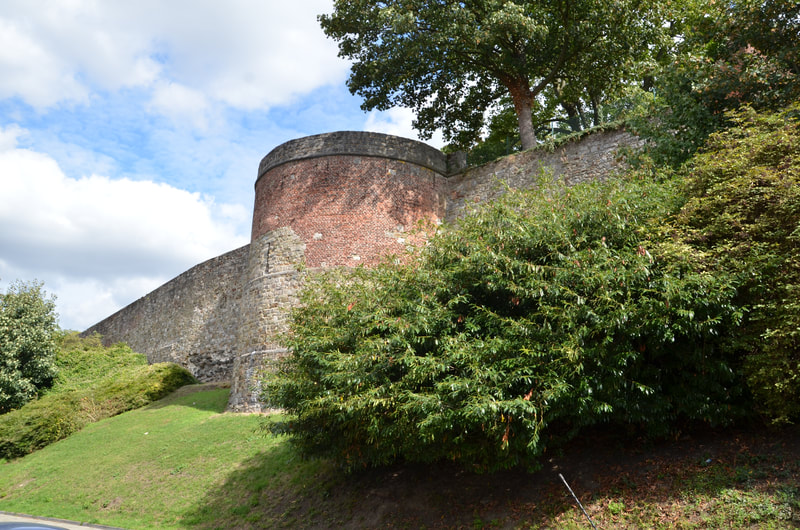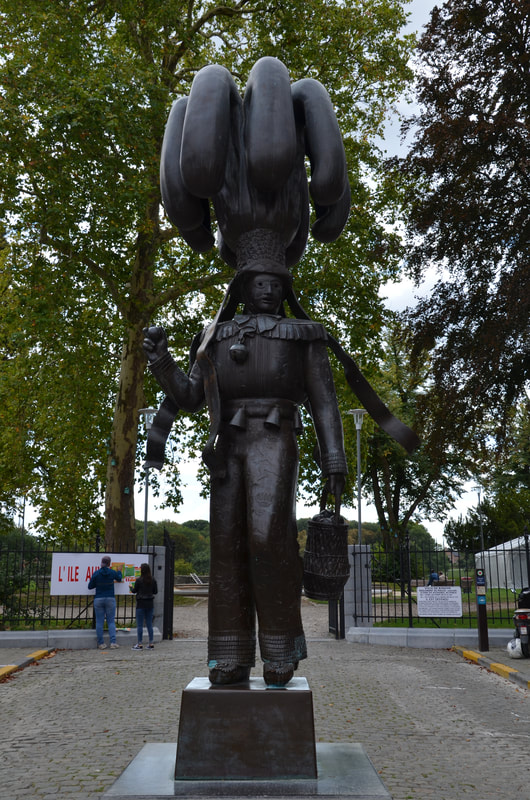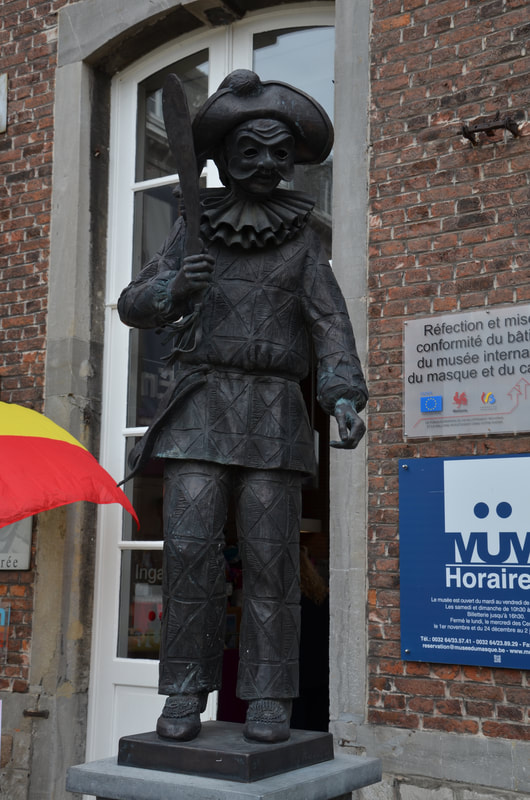Binche |
vertical divider
Miasto leżące w prowincji Hainaut, pomiędzy Mons a Charleroi, pierwszy raz wspomniane w 1124 roku, w piśmie biskupa Cambrai Brucharda. Rosnąca liczba handlarzy i rzemieślników osiedlających się w mieście spowodowała szybki ekonomiczny rozwój, a co za tym idzie konieczność jego obrony. Dlatego Baldwin IV wydał rozkaz budowy pierwszych murów obronnych, które w XIV wieku zostały rozbudowane do maksymalnej długości. Współcześnie właśnie wspaniale zachowane mury oraz karnawał są wizytówką Binche.
|
A CITY OF ART, HISTORY AND FOLKLORE
In the main square, the town hall with the belfry attracts attention. Built mainly in the 16th century, the building has three arcades dating back to the 14th century. On the belfry, inscribed on the UNESCO World Heritage List in 1999 year, there is a carillon consisting of 25 bells, the oldest of which dates back to 1596 year. Over the centuries, the town hall has been rebuilt many times. In 1896-1899 years the interior was completely changed.
Collegiate Church of St. Ursmar
History of collegiate of St. Ursmar is connected with the abbey founded here in 1408 year by this saint. In 1554 year, during the devastation of the castle of Mary of Hungary, carried out by the French army of Henry II, the temple also suffered serious damage. Its reconstruction was undertaken by the famous architect from Mons Jacques Du Broeucq. In the 12th century, on the site of the existing temple, there was a Romanesque church dedicated to Our Lady of Mount Carmel. The base of the tower, the west entrance, and several sections of the wall, which are the remains of the old temple, were incorporated into the newly built collegiate church of St. Ursmar.
The magnificent rood screen, dated to 1592 year, is an extraordinary example of the Renaissance. Its creator was Thierry Bidart. The upper part of the tower was built in 1583 year, and in 1621 year it was crowned with an onion-shaped dome. Most of the stained glass windows, except those in the choir, which were formed in 1850 year, date from the turn of the century. Near the church there is also a chapel of St. Andrew and the old cemetery.
In 1545 year the architect Jacques Du Broeuck started building a palace for Mary of Hungary. In order to make place for the new building, the castle, existing here since the 12th century, was demolished. In the year 1549 the works were completed. After the soldiers of Henry II set fire in the year 1554, the palace was rebuilt, part of which was turned into apartments. Too high maintenance costs of the palace resulted in its demolition in 1704 year. After archaeological research, traces of residence of Mary of Hungary were uncovered. Today, there is a city park in this place, in front of the entrance, to which stands the Gille monument, the main character of the Binche carnival, which takes place, under the auspices of UNESCO, on Tuesday before Ash Wednesday.
Defensive walls
The growing importance and wealth of Binche made it necessary to build defensive walls. Probably the first of them were created already before 1147 year. The city was growing all the time, there were more and more new residents, and thus also new buildings. At the beginning of the 13th century, the old walls became an obstacle to further development. Therefore, in 1230 year, the expansion of the city fortifications began. Eventually, the walls stretched 2126 meters. They were supported by about 30 towers and six gates. Only part of the fortifications, included in 1947 year on the List of Wallonia's Special Heritage, have survived to the present day. Today, wonderfully preserved, are one of the city's landmarks and proof of its centuries-old history.
International Museum of Masks and Carnival
The museum was founded in 1975 in buildings that housed a school run by the Augustinian Order in the 18th century. Here we will find masks and costumes from all over the world, we will find out what ritual functions they performed. We will get to know European carnivals, especially the annual carnival in Binche.
Carnival in Binche |
vertical divider
W 2003 roku uznany przez UNESCO za Arcydzieło ustnego i niematerialnego dziedzictwa ludzkości. Początki karnawału nie są znane, wiadomo natomiast, że jest to jeden z najciekawszych karnawałów w Walonii, którego sława wykracza poza granice Belgii.
|
During the carnival, about a thousand Gilles pass through the streets of Binche, dressed in characteristic costumes. They can only be worn by men from families living in Binche or who have been living in the city for at least five years. Beside Gilles there are also girls and boys dressed as Harlequins and the youngest children dressed in Pierrot's outfits (a figure in the French pantomime). Throughout Binche, there are statues depicting the characters who are the main heroes of the festival.
